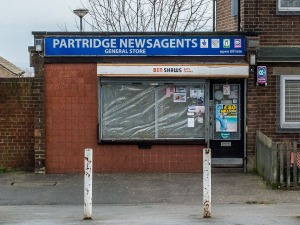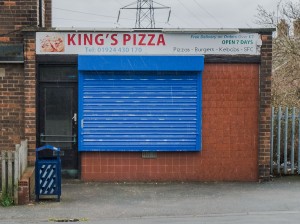I know that I said I wouldn’t be writing up any more specific details of the Arles Study Visit unless I was referring to something as part of my thoughts on other posts, however, as I felt the need to catalogue my visit as an aide memoire for my studies I thought that I would share it here on my blog. This will provide a good place to recall it but I also thought that it might help other student visitors to my blog in their wider research as well as to get a better sense of the intensity of diversity of such a study visit. And with that, here it is along with a short note of my immediate thoughts on each photographer’s work:
FRIDAY MORNING
The Walthur Collection
Themes:
- Taxonomy – the system of classification
- Typology – the act of placing something into a collection – a systematic classification
- Seriality – pursuing of a theme over a period of time
Karl Blossfeldt – collection of plant images identifying their design and shape – an example of how early photography was used to reveal things not otherwise noticed.
Bernard & Hilla Becha – photographic survey of industrial things that were soon to be lost – impressive visual presentation where the identical composition and tonal range of each image binds the work together.
J.D.Ojeikere – backs of heads of African women each with uniquely platted hair – the images are less identically structured than Bechas’ but worth noting that the body of work was built up over 10 years.
August Sander – portrait collection of 1920’s German people – portraiture not really my thing but still a very impressive pre-war collection, worthy of greater study for anyone into portraiture.
Richard Avedon – collection of middle upper class people with a greater sense of personality & power than Sander’s – a good comparator with Sander’s work.
Accra Shepp – full length portraits of people at Occupying Wall Street – dates at bottom help to remind that it was not a one off day – this didn’t appeal as much as the above, mainly because it seemed to create a sense of ‘look at me and where I am’, rather than portraying a political understanding of the event.
Nobayoski Araki – 101 Works for Robert Frank – diarised sequence of erotica and the every day banal – a snap shot approach which works when you are able to browse passed each of the 101 images rather than stop to think about them individually.
W.M. Hunt Collection – more to do with the collection itself, which was about archival group photographs – didn’t get much from this.
FRIDAY AFTERNOON
Mazaccio & Drowilal – winners of BMW’s artist in residence prize, creating a collection based around our fascination for and relationship with animals – prints on everyday items. Upstairs exhibition was a series of collages, mainly of large printed sheets of kitchen roll with photograph cut outs superimposed onto the design of the kitchen roll – difficult to explain the ‘left-field’ aspect of this exhibition but it was great to see what could be done, even if it was some way from my own photographic horizons.
David Favrod – Hikari (the light) – body of work based around a conversation the photographer had with his grandparents one day about the Hiroshima bombings – everyone was impressed with this and it remaindered me of my own thoughts of blackening out parts of an image to highlight my political concerns, may need to look back on this.
Vik Muniz – uses family photos and postcards to create his own large scale montages, some of which created a 3D effect as eyes followed you as you moved around the room – interesting, but I find myself looking more at the technique rather than any message they portray.
SATURDAY MORNING
Collection of Dutch photographers
Eric Kessels – a collection looking from above at the tops of cars and what they reflect of the surroundings from the body work – its interest didn’t hold me for long.
Hans Eijkelboom – questioning identity in four different ways: (1) turning up at strangers’ homes when the husband was away and interjecting himself into the typical family portrait; (2) following a photojournalist and placing himself into the scene that was to be photography and used in the local newspaper; (3) buying a new set of clothes each week and then taking a self-portrait wearing these clothes; and (4) asking people from school that he hasn’t met for a least 10 years what they thought he might have become and then photographing himself as that character – good approach towards getting the audience to think about different aspects of the same concept i.e. identity; we did wonder whether the photographer was telling the whole truth about his approach to some of these those (and whether this was positively purposeful).
Hans De Vries – The History of the Lemon Geranium: Says it all really – he follows the development of a geranium plant, as well as those he shared with friends!!! – my passion for geranium’s hasn’t shifted.
Jos Houweling – a photo based typology of Amsterdam (taken in the 1970’s), depicting aspects of the city often ignored. He arranged these into different categories such as bicycles, prams, cars with covers over them, people looking out of windows, utilities grates found in the floor, and dog poo found on the pavement (of particular interest of Gareth). Creates a good sense of place – it reminded me a lot of my Glasgow project.
Maurice Van Es – abstracts of every day items found in the home that have a significance to the photographer’s memory, and, a series of the photographer trying to photograph his younger brother who wants to hide behind the corner of the house – not particularly inspired by this.
Milou Abel – young photographer documenting the relationship she has with a young ‘special’ woman who has a penchant for collecting clothes – not particularly memorable for me.
Hans Van Der Meer – a collection of images or medium sized Dutch towns, showing their similarity of design whilst also encompassing a catalogue of hard landscape items found within these environments – I found it interesting whilst others didn’t seem to.
A Retrospective of the environmental award; Prix Pictet “New works from the four winners of the prestigious Prix Pictet devoted to sustainable development”
Mitch Epstein – a study of urban trees and their relationship with urban life and people – this is an aspect I have been thinking about as I wandered around Glasgow’s West End (an example of place affecting land, and land affecting place ).
Nadav Kander – photographs of desolated landscapes of restricted military zones – beautifully photographed and presented large scale, creating a sense of the sublime.
Chema Madoz – juxtaposing everyday items of the banal in a unique, often surreal, way to create new perspectives and meanings – visually quite brilliant but I couldn’t take any more than that from it.
SATURDAY AFTERNOON
The Discovery Award – “The Discovery Award honours a photographer or an artist working with photography whose work has just been discovered or deserves to be. The ten nominees exhibited have been selected by five great figures in photography from the five continents”:
Ilit Azoulay – large scale ensemble of objects found on construction sites and then arranging them to compose a new photograph of them – didn’t feel overly inspired with this.
Katharina Gaenssler – a room size collage created from smaller photographers of the same grand scale collage – again not too inspired here either, collages don’t seem to be my thing.
Miguel Mitlag – “has chosen to construct the spaces he photographs, producing images of singular intensity, an improbable and shifting substance, which he describes as ‘pseudo-realist’.” Make of that what you will, as I couldn’t!
Victor Robledo – a study of light in space and shadow, he looks at the emotional quality of light and how it affects the perception of time. A very quiet, unassuming series of photographs of white walls, shadows they create, and reflections through mirrors set at angles against these walls – a slow burner this one I think.
Youngsoo Han – photographer from South Korea who died over a decade ago therefore difficult to see how he fitted into this show. His photos are based around street photography in his country and are very reminiscent of Henri Cartier Bresson – good images but outdated in this contemporary field.
Kechun Zhang – visually appealing large scale images taken along the Yellow River in China. The subdued colour palette and misty atmosphere help to create a serene environment for each photograph – are they beautiful or sublime or both?
Pieter Ten Hoopen – a 10 year documentary of a small town in America close to the Glacier National Park. It is presented in a dark, foreboding, and depressing palette; which helps to portray a true sense of the place and the struggle for a livelihood of its habitants – this was one of my favourites, mainly because I have seen this type many times before yet this was somehow more genuine & believable than others.
Will Steacy – an investigation into the changing face of a local newspaper business affected by the introduction of technology which began to replace the need for people to the extent that the business was eventually not required. It asks the viewer to think about the cost of this loss, not only of people’s livelihood but also of a tradition based around people – how will news be reported if there are no people to report it? – there was a debate about its presentation which had a lot of material whereas it could be argued that the key message was already told in a selection of four images – I liked this mainly because it made me properly think about the social implications of the loss of this industry
Kudzanai Chiurai – a fictional tableau of the notion of sacrifice in modern political conflict, as well as the impact of corruption and government policy – this nearly grabbed me but not quite.
Patrick Willocq – performative images of indigenous African culture, done in a seemingly comical manner – very colourful and eye-catching but I struggled to find its serious point.



